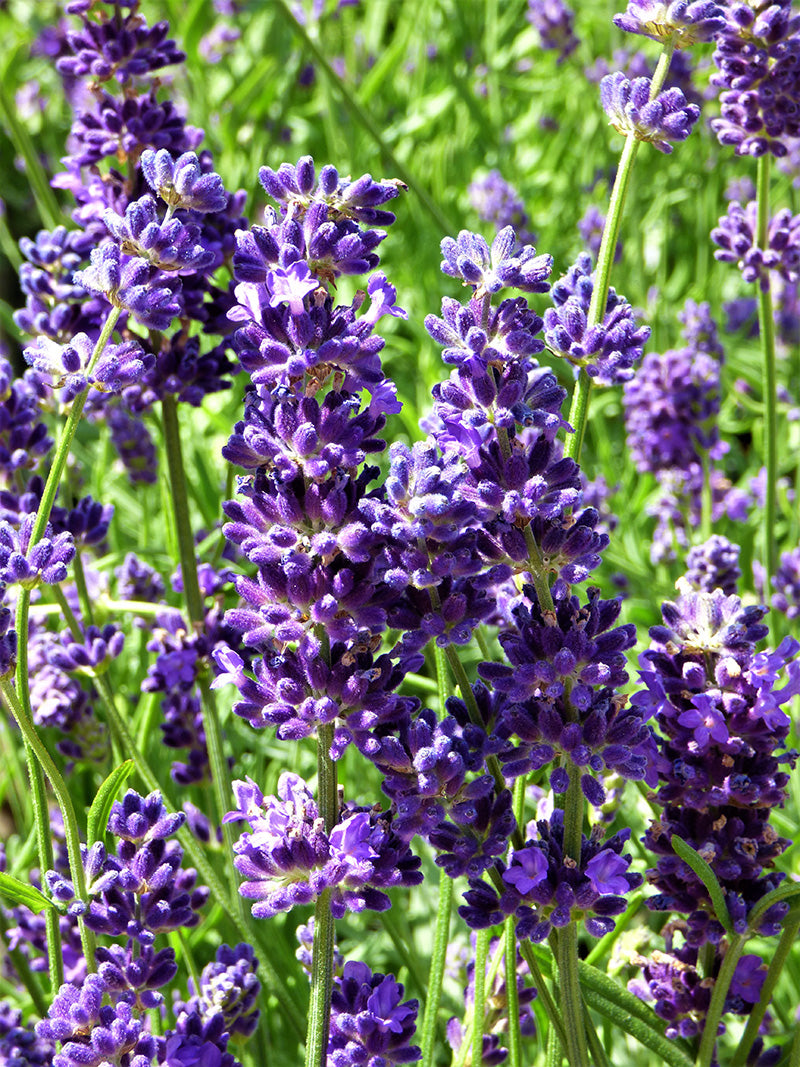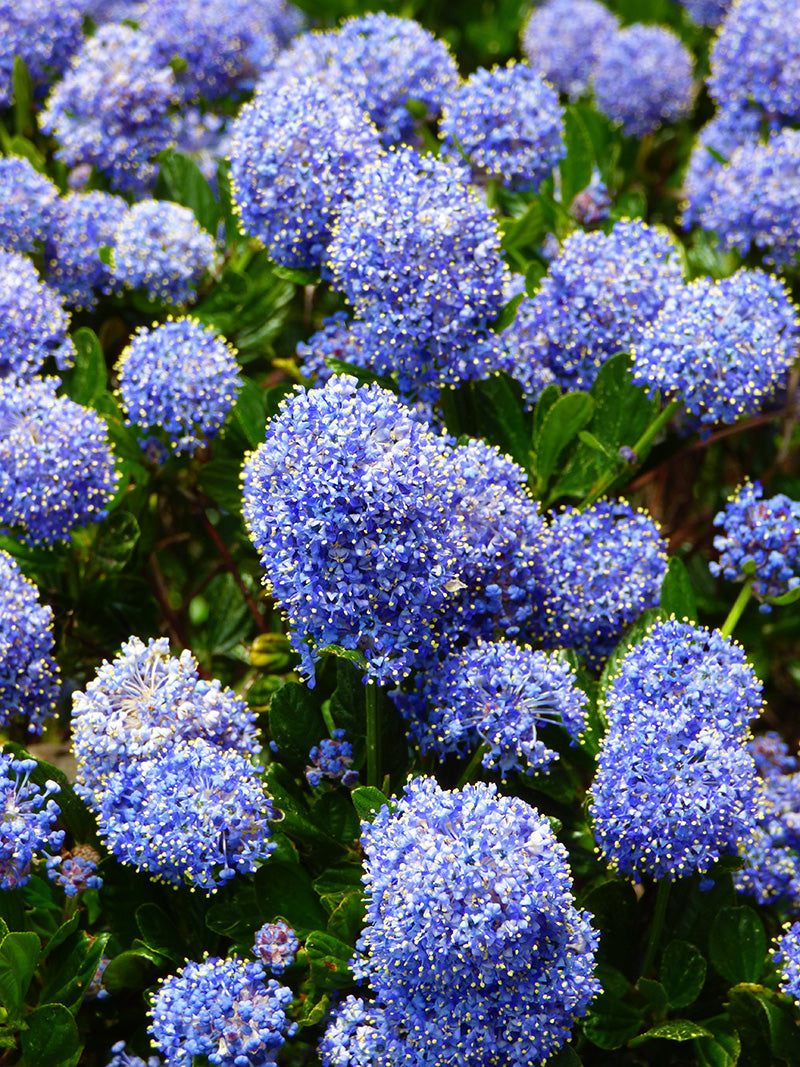
What are the signs that you have inadvertently opened an all-you-can eat deer buffet in your garden? First of all, the hosta never seem to flush out, tulip flowers go missing, rose and azalea buds form but you never see the blooms, and all the fruit on the bottom six feet of your apple and pear trees disappears at the last minute. Then there’s the mystery of the phallic cedars, which appears to be the work of a demented topiarist who works in the cover of night but is in fact the constant browsing of does, stags, and fawns who can only reach so high, leaving the tops of the cedars to grow naturally.

(Deer-munched emerald cedars)
Sure, you can build a fortress of fences, adopt a big dog to protect your landscape (be prepared for the constant barking), or spray blood-based deer repellents, but why not just start planting shrubs and perennials that the deer don’t like eating — plants with thorns or scents and flavours that may be subject to occasional sampling but are rarely browsed to the point of no return. With that in mind, here are a dozen great candidates that are also relatively easy to grow.
Yarrow (Achillea millefolium)

(Yarrow [Achillea 'New Vintage Rose'])
This perennial does double duty as a drought-tolerant and deer-resistant plant, as the chamomile and chrysanthemum scent throws them off. There is almost every flower colour available (except maybe the purple-blue hues) and both compact and tall forms are easy to find. Yarrow prefers full sun and good drainage, and easily adapts to many soil types.
Lavender (Lavandula spp.)

(Lavender [Lavandula angustifolia 'Super Blue'])
It is the beautiful flower fragrance and scented foliage that keeps the deer at bay, with Spanish Lavender (Lavandula stoechas) having a higher camphor content giving it a very unappealing, pungent flavour. On the other hand, both English (L. angustifolia) and Provence (L. x intermedia) are hardier (USDA zone 5) and the flowers can be used sparingly for culinary purposes or aromatherapy.
Peonies (Paeonia spp.)

(Peony [Paeonia x 'Red Charm'])
Despite looking absolutely scrumptious with those big buds and luscious ball-shaped blooms, peonies are rarely browsed by deer. They are also long-lived perennials that are quite cold hardy. Common herbaceous peonies are hardy to USDA zone 3, and both Itoh and tree peonies (Paeonia suffruticosa) can tolerate zone 4, although the latter may suffer occasional tip dieback. Peonies also make great cuts for those flower arrangements.
Smokebush (Cotinus coggygria)

(Smokebush [Cotinus 'Golden Spirit'])
This deciduous shrub has an odd spicy scent and may suffer the occasional nip from young fawns developing a palate, but they are rarely severely browsed. They are cold hardy (USDA zone 4), drought tolerant once established, and generally low maintenance. Smokebush offers airy smoke-like flowers and often brilliant foliar tones of rich burgundy (‘Royal Purple’) or gold (‘Golden Spirit’), with the latter shifting to dramatic wine to reddish-orange tones in the autumn.
Russian Sage (Perovskia atriplicifolia)

(Russian Sage [Perovskia atriplicifolia 'Denim N' Lace'])
Russian Sage is a versatile perennial for full-sun gardens that is both drought tolerant and remarkably cold hardy (USDA zone 4). It makes a great filler for mixed borders and the strong sage-scent is quite unappealing to deer, despite the blooms being edible and a great addition (in moderation) to salads or a Bloody Mary. They combine well with other deer-resistant silver-leaved plants such as Artemisia, Senecio (like Dusty Miller), and Rose Campion (Lychnis coronaria).
Daphne (Daphne spp.)

(Daphne x transatlantica 'Eternal Fragrance')
Although they hate being transplanted and can be a little slow to develop when young, Daphnes are beautifully fragrant additions to any garden once established. All parts of the plant are poisonous and quite bitter, which is why the deer tend to leave them alone. I recommend Daphne ‘Eternal Fragrance’ as it grows to a modest size (3’ tall and wide) and the beautifully scented pink-blushed white blooms are literally borne from April to November in abundance.
Hellebores (Helleborus spp.)

(Hellebore [Helleborus 'Ice N' Roses Early Rose'])
These stunning perennials brighten our late-winter gardens with a dazzling array of single, anemone, or double blooms of almost any hue. Like daphne, this member of the Buttercup family is toxic and as such, unappealing to the deer. The Lenten roses (Helleborus x hybridus) are quite long-lived but really resent being transplanted, so site them carefully, preferably in a part-shade to part-sun location.
California Lilac (Ceanothus spp.)

(California Lilac [Ceanothus 'Victoria'])
This broadleaf evergreen shrub takes heat and drought but has suffered these past two winters due to drastic temperature fluctuations. That said, California Lilacs bulk up rather quickly and are quite floriferous, smothering their canopies with abundant blue blossoms for the pollinators from late spring into summer. ‘Victoria’ is probably your best choice for varieties.
Euphorbia (Euphorbia spp.)

(Euphorbia 'Tasmanian Tiger')
It is the milky sap that irritates the skin which makes this such a deer-resistant perennial. Many are also evergreen including ‘Wulfenii’ (blue-green foliage), ‘Tasmanian Tiger’ (creamy-white margins), ‘Glacier Blue’, or ‘Ascot Rainbow’ (gold variegation with red highlights), making dramatic additions to winter planters. Donkey Tail spurge (E. myrsinites) looks great in any rockery while the herbaceous Cushion Spurge (E. polychroma) produces a tidy dome of brilliant chrome-yellow flowers.
Japanese Barberry (Berberis thunbergii)

(Japanese Barberry [Berberis thunbergii 'Aurea Nana'])
Japanese Barberry are deciduous shrubs that are primarily grown for their brilliant foliage of bright gold or burgundy, but it is the myriad of thorns that keeps the deer at bay. They are both drought tolerant and easy to care for with the most popular cultivars being ‘Rose Glow’ (burgundy with pink veining), ‘Aurea Nana’ (compact brilliant gold), and ‘Concorde’ (compact deep burgundy).
Red-Hot Poker (Kniphofia spp.)

(Red Hot Poker Plant [Kniphofia 'Rocket's Red Glare'])
The Red Hot Poker plant is an exotic looking evergreen perennial that takes the heat (because they are from Africa), and is drought tolerant and long-lived. The often-bicolor blooms are borne above the grass-like foliage from late spring to fall (with deadheading) and despite looking like an appetizer on a stick, the deer don’t seem tempted.
Butterfly Bush (Buddleia / Buddleja)

(Butterfly Bush [Buddleia 'Miss Molly'])
Butterfly Bush is trending right now, mostly because it puts up with severe summer heat, is drought resistant once established, and blooms on new wood, so flowers are assured. They also naturalize well along a sunny forest edge and the newer varieties are sterile, so invasive plant concerns should not be a problem. While the deer don’t seem to bother them, most negative impacts come from pruning in late fall and not leaving enough of a winter dieback buffer, so wait until spring.
Just remember that young deer will browse just about anything until they learn which plants taste better, but all of the above should survive the deer buffet.
All images Copyright MK Lascelle 2024


